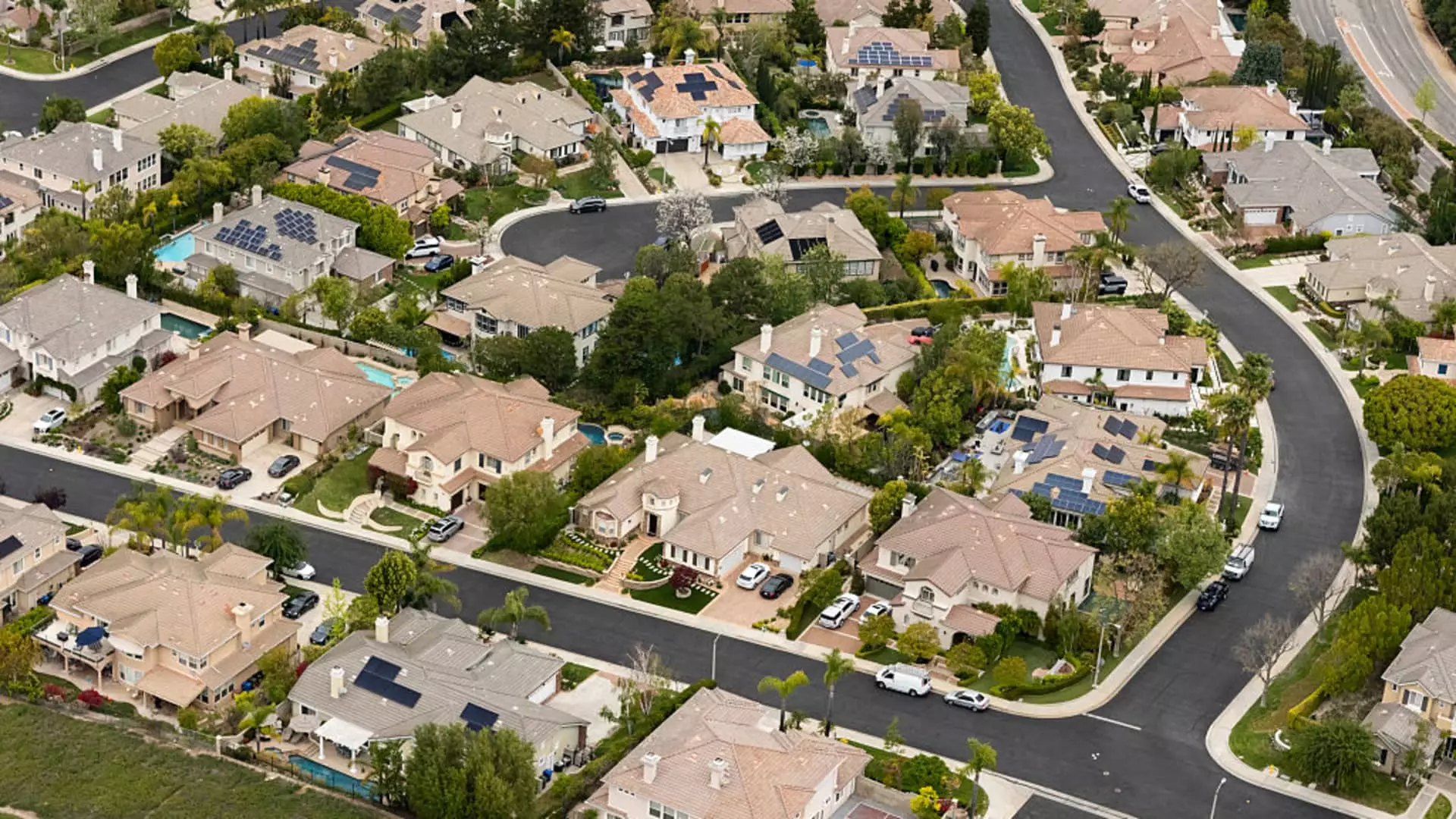The COVID-19 pandemic has inflicted great change across myriad sectors, yet few have felt the weight quite like the housing market. A surge in housing prices—39% higher as of March 2024 than pre-pandemic levels—has decimated the hopes of many aspiring middle-class homeowners. This dynamic has fostered a scenario that feels paradoxical: while we witness a modest relief in housing supply, the prices remain intolerably high, particularly for those on lower and middle incomes. The true reflections of a thriving economy should include accessible home ownership, yet the current figures starkly highlight a failure to deliver that promise.
A Divergent Market Landscape
Interestingly, home sales are bifurcated; while the higher-end market is enjoying a sales boom, lower and middle-tier homes languish in stagnation. According to the latest report from the National Association of Realtors, affordability remain effective but fail overwhelmingly for many buyers. Those solving basic affordability challenges—particularly those earning between $75,000 to $100,000—have witnessed a mere increase of 0.4% in accessible listings this past year. Contrast this with 2019, when nearly half of the listings were affordable for these buyers.
This stark decline signals not just a supply issue but a broader systemic failure in policies supporting equitable housing. The statistical revelation that buyers in the lowest income brackets can now only afford a meager 8.7% of available listings is alarming. Such figures test the credibility of our economic structure. It begs the question: has capitalistic aspiration overridden the very foundation of the American Dream?
The Truly Underrepresented
As we dissect the disparities, the statistics paint a disheartening scenario for lower-income brackets. Homebuyers earning below $75,000 face a continuously diminishing pool of affordable listings, leading to an exclusion from market participation just when society should be building up economic resilience. The laments of a $50,000 salary being sufficient to afford 8.7% of available homes emotionally resonate with many who find themselves trapped in a cycle of soaring rent and stagnant wages.
Those at the very top—households earning $250,000 and above—face an entirely different reality. These individuals can access an astonishing 80% of available listings. This disparity is not mere chance but the result of policy choices that have historically catered to developers and the wealthy, rather than ensuring homes for struggling families. Perhaps now, more than ever, we ought to question whether the American economic ladder has become vastly uneven.
The Unfinished Territories of Housing Supply
Even as progress toward balancing the housing supply is noted, it remarkably fails to reach diverse geographical markets uniformly. While cities in the Midwest and South show encouraging signs of improvement, others—principally coastal metropolises like Los Angeles and San Diego—are witnessing a pronounced deterioration. The report explicitly indicates that these areas are grappling with long-standing underbuilding and restrictive zoning laws that strangle growth and development. If reform is not pursued, such barriers could exacerbate an already dire situation into outright crisis.
Take Seattle and Washington, D.C., cities that boast rich cultural and social resources yet remain unfriendly to those who wish to settle and thrive. Pricing runs rampant here, and the unrealistic salary needs to secure housing continue to discourage new residents. This market’s inadequate infrastructure raises fundamental questions about societal priorities: if we continue down this path, who will be left to inhabit these once-vibrant communities?
The Role of Policy and Construction Dynamics
While homebuilders endeavor to surge affordable housing supply, their efforts are systematically overwhelmed. Compounding costs attributable to tariffs and stringent regulations only serve to exacerbate affordability crises. The current economic snags necessitate policymakers to reevaluate zoning laws, construction practices, and supply chain dynamics—because the reality is this: it is not merely about erecting more buildings; it is about creating homes for individuals and families, places where dreams can incubate.
To read reports that suggest certain markets may be bending back toward equilibrium offers a glimmer of hope. However, without grassroots advocacy and consistent policy dialogue that embraces the significance of housing affordability as a core issue, any glimmer is fleeting. The American Dream should not be made exclusive to those with deep pockets, nor should it be an unattainable fantasy for the many who strive to transcend economic limitations.
In navigating this crisis, perhaps the most critical takeaway is the urgent need for a comprehensive approach to housing accessibility—one that prioritizes people over profits. What we choose to address today will shape the socio-economic fabric of our country tomorrow, and as every statistic underlines, the time for transformative action is now.

